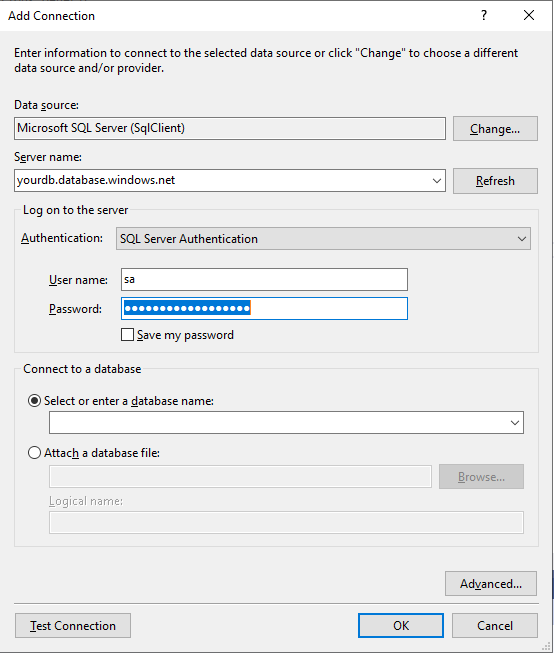

- #AZURE DATA STUDIO VS SQL SERVER MANAGEMENT STUDIO CODE#
- #AZURE DATA STUDIO VS SQL SERVER MANAGEMENT STUDIO WINDOWS#
For example, to see if the underlying data type is Datetime or Datetime2.

When I write queries, I often need to check database object definitions. I will try to bold some neat features that Azure Data Studio offers: #1 Object Definitions Ok, enough with generic descriptions of the features and differences between ADS and SSMS. I can’t elaborate more on this since I’m still not using this feature (I’m a traditional SQL guy), but it definitely gives more flexibility for more sophisticated usage, comparing to SSMS. That’s a huge step forward and going in line with Microsoft’s general expansion to non-Windows world.Īnother huge difference to SSMS is that you can use notebooks, and writing SQL, Python, Spark, or Scala scripts within them.
#AZURE DATA STUDIO VS SQL SERVER MANAGEMENT STUDIO WINDOWS#
The main advantage of Azure Data Studio is its portability – while SSMS can work only on the Windows platform, ADS can run on Linux and macOS as well. So, my first impression is: Microsoft named this IDE quite misleading! Why calling it “ Azure Data Studio“, when connecting to Azure is just one of the options? You can also connect to the on-prem SQL Server database, as previously with SSMS, but you can also connect to Big Data Clusters (the latest feature of SQL Server, introduced in 2019 edition).

However, after I heard Ben Weissman speaking at SQL Saturday Vienna this January when he explained that “Azure” word doesn’t necessarily mean that you need to use this tool in conjunction with Azure palette of products, I decided to give it a try. When I heard the name of the new tool, I wasn’t planning to test it deeply, because the “Azure” part didn’t wake special interest in me. Short intro before I dive deeper into some cool features of the “new kid on the block”. Since Microsoft made Azure Data Studio generally available in September 2018 and investing heavily in this tool improvement in the meantime, it looks like good old SQL Server Management Studio is destined to go into (well-deserved) retirement…Īs a SQL Developer, who is writing queries on a day-to-day basis, I will try to give some observations based on what I discovered so far, with special emphasis on Azure Data Studio, since I believe that most of us are more than familiar with SSMS already. Especially after Microsoft recently decided to include Azure Data Studio in the latest SSMS installation by default! In SSMS 2008 it combines nicely with the built-in intelli-sense, effectively providing more-or-less the same base functionality as Red Gate's SQL Prompt (SQL Prompt does, of course, have extra stuff, like snippets, quick object scripting, etc).Question from the title already became extremely popular and it will become more and more as time passes by.
#AZURE DATA STUDIO VS SQL SERVER MANAGEMENT STUDIO CODE#
The SSMS Add-in allows you to set your own hotkey (default is Ctrl- K, Ctrl- F, to match Visual Studio), and formats the entire script or just the code you have selected/highlighted, if any. It's available for immediate/online use at, and just today graduated to "version 1.0" (it was in beta version for a few months), having just acquired support for MERGE statements, OUTPUT clauses, and other finicky stuff. Late answer, but hopefully worthwhile: The Poor Man's T-SQL Formatter is an open-source (free) T-SQL formatter with complete T-SQL batch/script support (any DDL, any DML), SSMS Plugin, command-line bulk formatter, and other options.


 0 kommentar(er)
0 kommentar(er)
